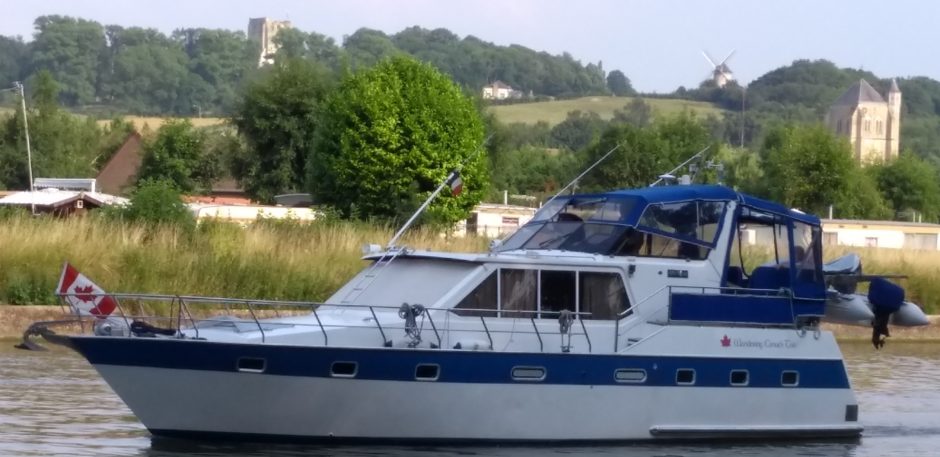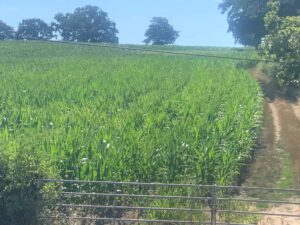The Canal Lateral de la Loire follows the Loire river, which, at times, has plenty of water (a torrent) for navigation, but by midsummer, is a maze of small lagoons, huge sandbars and a nightmare for navigation. The French realized this and several plans were made for canals alongside the river. The result was a canal from Roanne to Briare. I met this canal at Digoin, where the Canal du Centre branches off to the valley of the Saone. Now, I will be climbing over the summit of the Loire valley to the valley of the Seine.

The pont bridge over the Allier, showing the source of some of the sand that causes such navigation challenges
This canal has experienced many changes, and especially in how the canal accommodates the major rivers of this valley. There are three major canal bridges (aquaducts) to carry the canal. One at Digoin, one crossing the major tributary, the Allier, and the last at Briere, which eliminated 7 locks and a treacherous descent on the Loire river, with it’s constantly changing channels.
The Briare canal links the Loire valley and the industrial sites I’ve passed through, to Paris, and then the sea. Because the Loire is so seasonal and difficult to use for navigation, other canals have been used in the past to try and link the interior of France to the sea. The Berry Canal, (now abandoned), and the Canal d’Orleans are two of those attempts: they worked, but were plagued with water supply problems, and were swallowed economically by the railways, and are now closed.
The trip has been interesting: the very gentle descent has made lock work easy, and the scenery changes significantly depending on the commune (municipal district). Goat cheese factories, lots of different wine areas, and many cattle farms, with concomitant fodder and pasture lands. All making for a varied scenery.
And alongside the canal in the river valley are some amazing chateaux. Mostly stately homes, in a variety of sizes and degrees of opulence; some preserved and used, some in decay and really mostly ruins.





